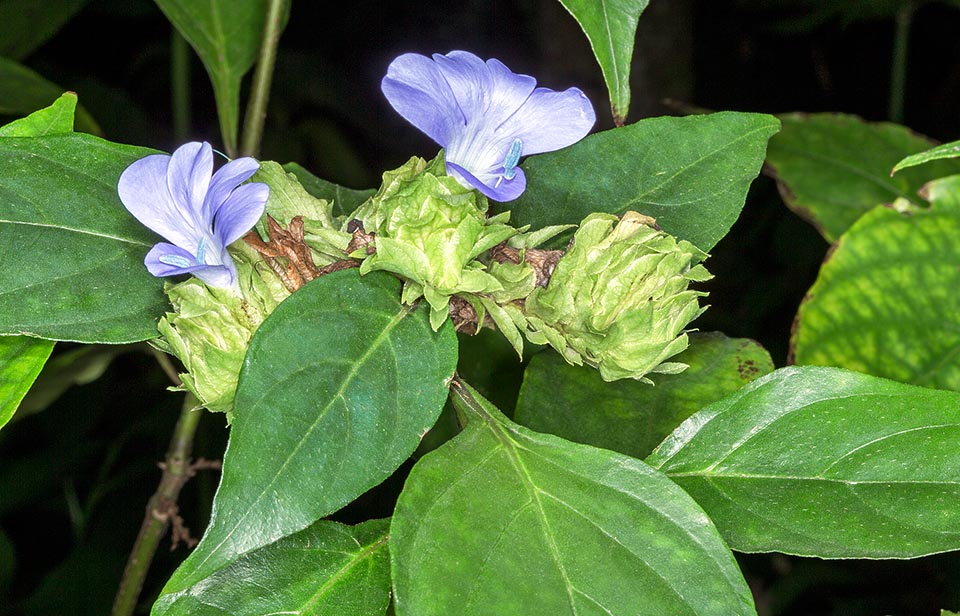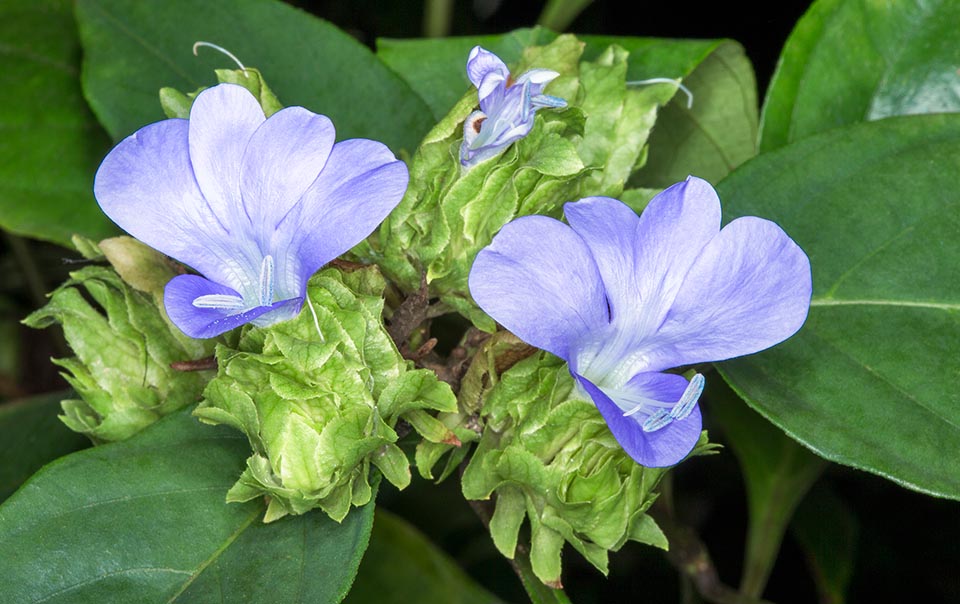Family : Acanthaceae

Text © Pietro Puccio

English translation by Mario Beltramini

Native to India, Barleria strigosa is a semi-shrubby perennial bushy species, a little over 1 m tall, with proved medicinal virtues © Giuseppe Mazza
The genus is honoured to the French botanist J. Barlier (or Barrelier) (? – 1673); the specific name is the Latin adjective “strigosus, a, um” = slender, gaunt, but which in the botanical Latin assumes the meaning of equipped with rigid, short and thick hairs.
Common names: jhaati, kaaraajaati, nil jhinti (Bengali); nili, katsaraiya (Hindi); nilakurnni (Malayalam); koraanti (Marathi); artagalah, bana, kakubha, mahasaha, nilakusumah, nilapushpi (Sanskrit); nili, shemmuli (Tamil); mullugorant, nilambaramu (Telugu).
The Barleria strigosa Willd. (1800) is a perennial bushy semi-shrubby species, erect, evergreen, up to about 1,2 m tall, with cylindrical stems and leaves, on a 1-3 cm long petiole, opposite, simple, oblong-elliptic with lon gpointed apex and entire margin, 6-18 cm long and 3-10 cm broad, glabrous above, with thick and short down in correspondence to the ribs below, of dark green colour. The inflorescences are axillar and compact terminal spikes on short peduncle, 2-7 cm long, with oblong imbricate bracts with pointed apex and ciliate margins and cerulean flowers that usually bloom one at a time. Quadripartite calyx with unequal lobes, the two outer ones ovate, 2-3 cm long and 0,8-2 cm broad, with finely toothed margins, and two inner ones linear-lanceolate, about 1 cm long and 0,2 cm broad, with ciliate margins.

The inflorescences are 2-7 cm axillar spikes, terminal and compact, with imbricate bracts. Imbutiform cerulean flowers with 5-6 cm broad corolla © Giuseppe Mazza
It usually reproduces by seed in sandy loam rich of organic substance maintained humid at the temperature of 24-26 °C.
Species diffused in the places of origin and cultivated in the family gardens due to its ornamental characteristics, but especially for the virtues attributed by the popular medicine, naturalized in some countries of South-East Asia and in some zones of Queensland (Australia). Cultivable in the tropical and subtropical regions, requires a shady position and soils constantly humid, in the climates where possible the continuous permanence in open air is not possible it may be grown in pot, with draining loam rich of humus, to be sheltered in protected ambient during the winter months. Utilized since remote times in the Indian traditional medicine for various pathologies; laboratory studies have revealed the presence, in various parts of the plant, of bioactive compounds of potential interest in the official pharmacopoeia.
Synonyms: Barleria fasciculata Russell ex Wall. (1830); Barleria polytricha Wall. (1830); Barleria unilateralis Buch.-Ham. ex Wall. (1830); Pseudobarleria hirsuta Oerst. (1855); Barleria caerulea Roxb. (1832); Barleria macrophylla F.Heyne ex C.B.Clarke (1884); Barleria polytricha var. polystachya C.B.Clarke (1884); Barleria strigosa var. terminalis (Nees) C.B.Clarke (1884); Barleria strigosa var. subglabra Kuntze (1891).
